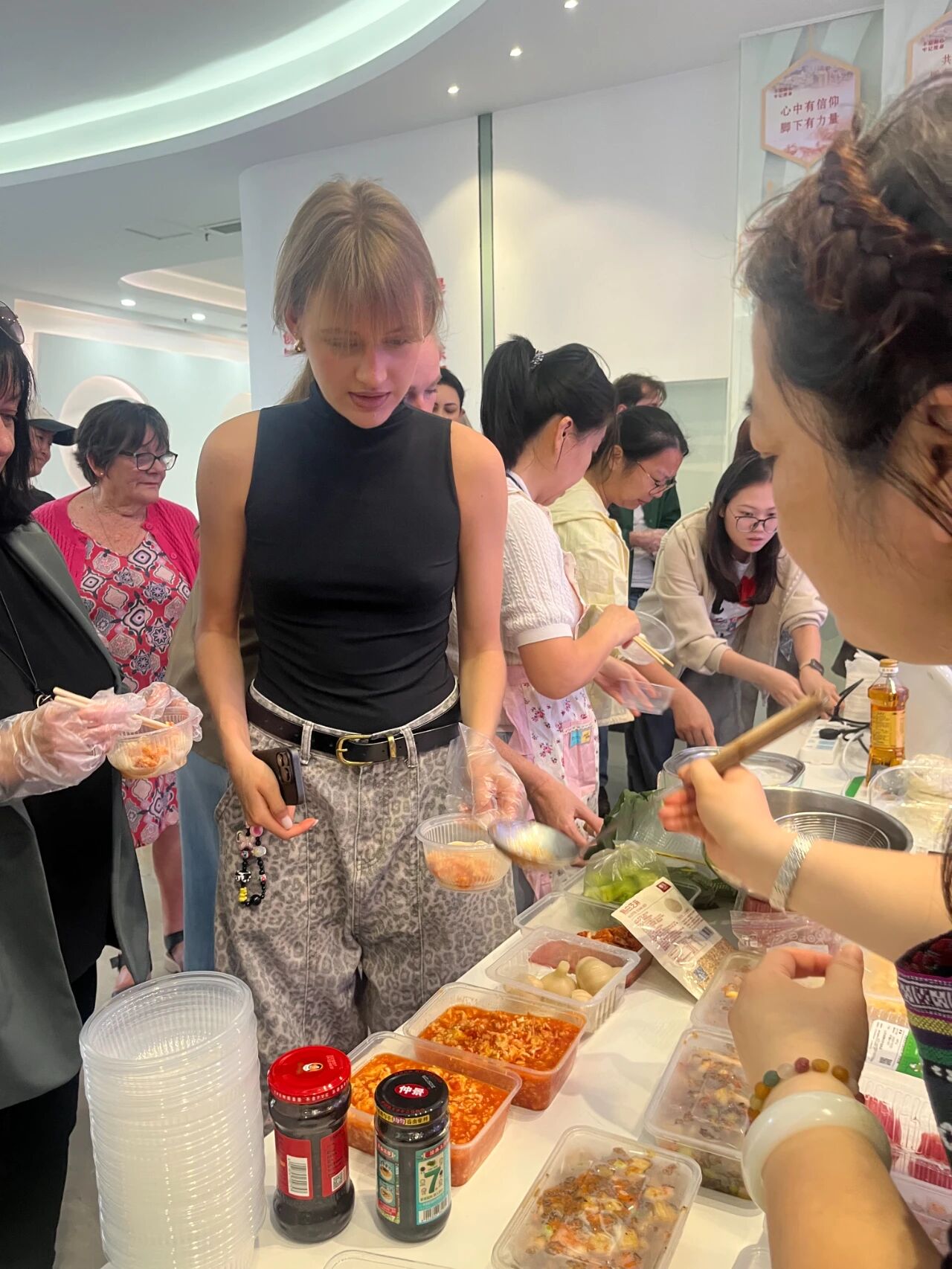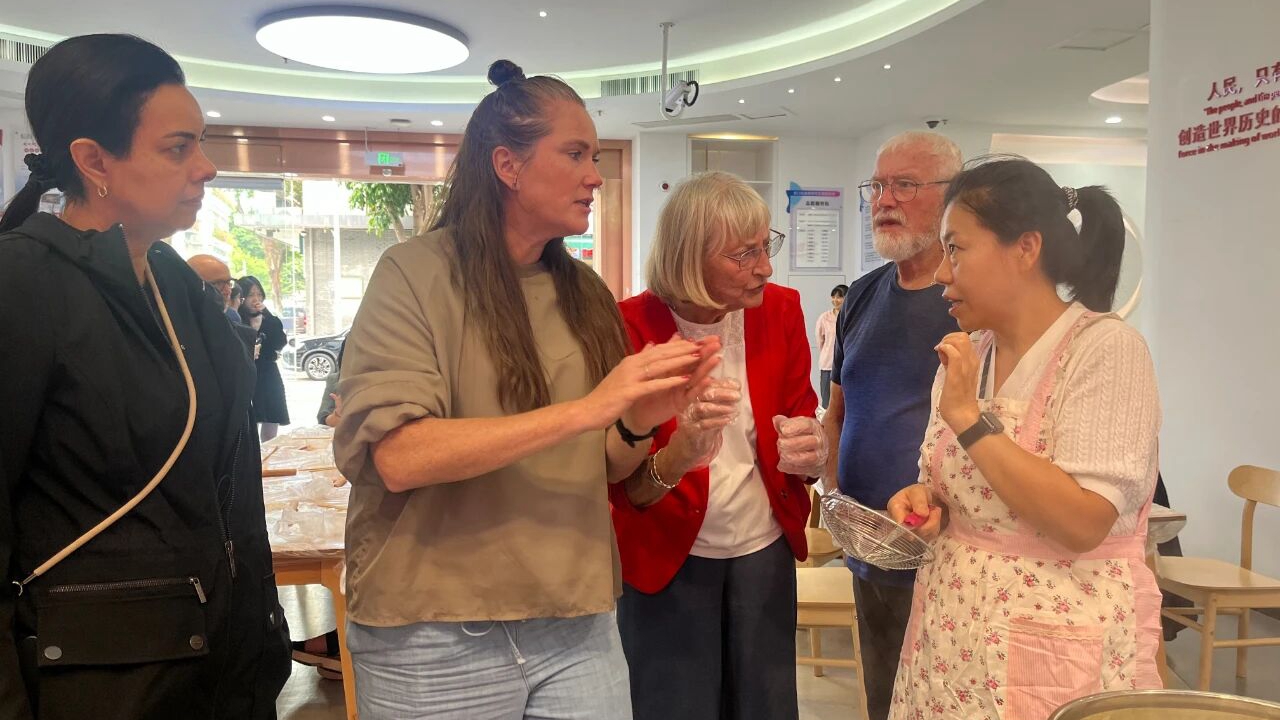Shekou class turns dough into cross-cultural experience
Writer: Wei Jie | Editor: Lin Qiuying | From: Original | Updated: 2025-10-27
A roomful of expat residents watched, laughed and got their hands doughy as nearly 30 participants learned the art of handmade noodles at a lively morning class in Shekou on Friday.

Participants pose for a group photo after the morning class in Shekou on Friday. Photos by Wei Jie
The event, hosted by the Shekou Management and Service Center for Expats (Shekou MSCE) as part of its expats’ morning school program, turned a simple cooking lesson into a cross-cultural celebration of food, technique and community.
English-speaking instructors began the session with a short theory lesson on kneading and resting the dough. “The softness of the dough determines the texture, and be sure to cover the dough with a damp cloth while it rests,” participants were told. Following a demonstration, attendees gathered around long tables for their hands-on practice. The room was filled with the rhythmic slap of dough being stretched into long, even strands, questions and easy laughter as people concentrated on getting their noodles right.

Participants react while hand pulling strands at the class.
Even though the dough had been prepared the night before, it took the participants repeated practice to pull an even strand. “Although the dough was prepared for us, pulling a long, even strand isn’t easy at all,” said Anilo D’Angelo, an Italian resident who traveled from Luohu District for the event.
D’Angelo, who works in the electronics sector and has a strong interest in Chinese culture, said he had hoped to learn how to make the dough from scratch at the morning class. “I learned to make fresh pasta with my mother and wanted to see the difference firsthand,” he said, adding that he totally understoo why the class focused on shaping rather than the lengthy kneading and resting process. Enrico Bisello (in blue) takes notes at the morning class.
Enrico Bisello (in blue) takes notes at the morning class.
Playful moments came with the cat-eared noodle (mao er duo) demonstration. Enrico Bisello, an Italian-Australian who has worked in China for 15 years, quickly shaped perfect pieces under an instructor’s guidance. “This is quite similar to a kind of Italian pasta, gnocchi,” he said. “It feels like a link between China and Italy.”
Bisello, who has taken cooking workshops for years, showed pictures on his phone of other classes he’d attended, including a Japanese cooking class in August.

Sofia Lukiantseva has topping on her bowl of hand-pulled noodles.
When steaming bowls of noodles made by the participants, topped with fragrant sauces, were served, the expats eagerly tasted their handiwork. “The noodles I made taste especially good,” said Sofia Lukiantseva from Russia.
“I like the hand-pulled noodles more than the cat-eared ones,” said Mette Andersen, a Danish stay-at-home mom who attended the morning class with her parents. “The cat-eared noodles are a bit too chewy for me, but they are delicious too.”

Mette Andersen (2nd L) asks the instructor (R) about dough resting at the class.
Andersen, who recently came back from a trip to Beijing with her parents, asked the instructor about dough-resting times for different types of noodles. “So dough for hand-pulled noodles needs to rest overnight in the fridge, while dough for cat-eared noodles requires less time. Is that right?”
Zhang Yanying, a Shekou MSCE staff member who oversaw the class, said the morning-school series aims to build a cultural exchange platform through everyday, hands-on activities. “Workshops like this one, along with traditional Chinese medicine classes, help foreign residents integrate quickly into community life.”
“This is so much fun.” said Kerry Howell from the U.K. after the class.